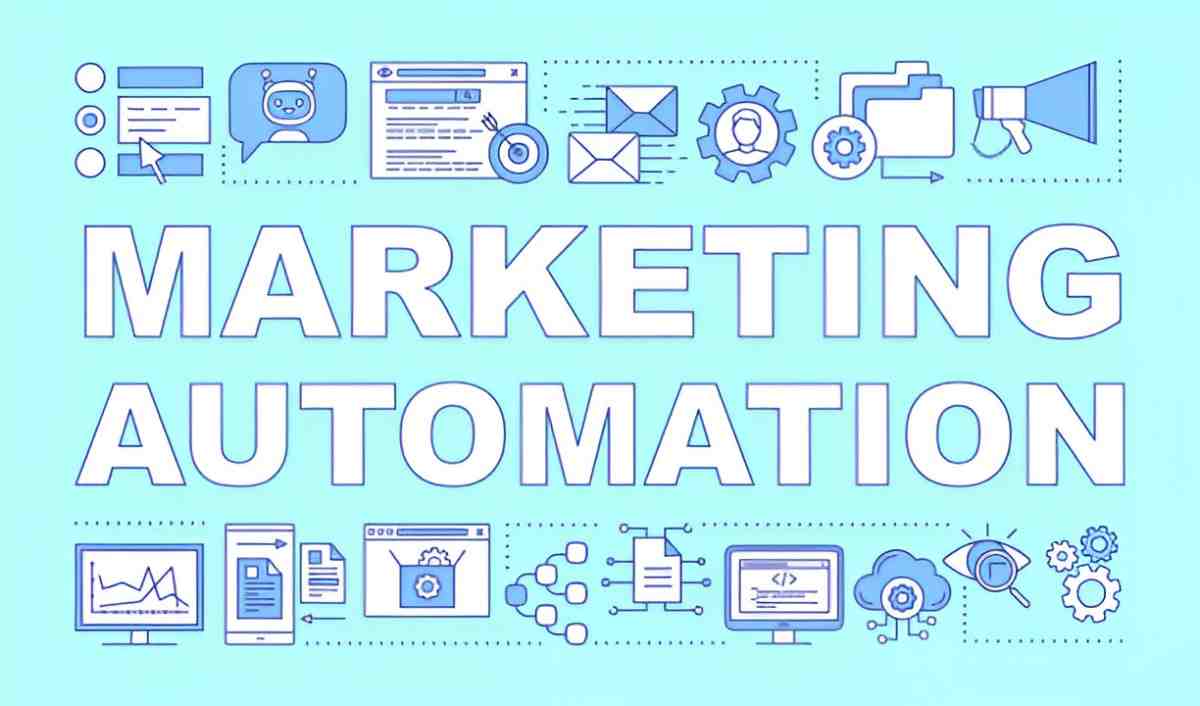As a digital marketer, I’ve realized that email marketing is one of the most effective ways to reach my audience, nurture leads, and convert prospects into customers. But with the demands of running campaigns, it can become overwhelming to manually manage each step. That’s where email automation tools come in handy. These tools help me automate repetitive tasks, segment my audience, and send personalized messages at the right time, all while saving me time and effort.
In this article, I’ll walk you through the top email automation tools that I’ve found to be incredibly helpful in streamlining marketing efforts. I will explain how each tool works, highlight its features, and compare them to help you choose the right one for your business.
What is Email Automation?
Email automation refers to the use of software tools that automatically send emails to a targeted audience based on specific triggers. These tools allow marketers to design workflows that send out emails when certain conditions are met. The goal is to deliver the right message to the right person at the right time, without the need for manual intervention. I use email automation to nurture leads, increase conversions, and maintain engagement with my audience, all while cutting down on the time I spend on repetitive tasks.
Why Use Email Automation?
Over the years, I’ve learned that email automation offers several key benefits:
- Time Efficiency: Email automation takes the burden of repetitive tasks off my shoulders. I can schedule emails in advance and let the tool do the work for me.
- Personalization: Automation doesn’t mean generic emails. I can still personalize content based on user behavior and preferences, which boosts engagement.
- Better Segmentation: Email automation allows me to segment my audience based on factors like demographics, behavior, and engagement, ensuring that the right message reaches the right person.
- Scalability: As my email list grows, automation makes it easier to manage large volumes of subscribers without sacrificing quality or relevance.
- Improved Metrics: Automated emails are easy to track, and I can analyze open rates, click-through rates, and conversions to optimize my campaigns.
Now that you understand the value of email automation, let’s dive into the top tools that I use and recommend for streamlining your marketing efforts.
1. Mailchimp
Mailchimp is one of the most well-known and widely used email automation platforms. It offers a comprehensive set of features that help me create, automate, and optimize email campaigns.
Features:
- Drag-and-Drop Editor: Mailchimp’s easy-to-use editor allows me to design professional emails without needing coding knowledge.
- Email Automation: I can set up automations based on user actions like subscribing to a list or making a purchase. It also allows me to send personalized recommendations.
- Advanced Analytics: I get detailed reports on my campaigns, including open rates, click-through rates, and revenue generated.
- Segmentation: Mailchimp offers robust segmentation tools, so I can tailor my campaigns to specific groups based on location, interests, and past interactions.
- A/B Testing: This feature helps me test different subject lines, content, and sending times to optimize my campaigns.
Pricing:
Mailchimp offers a free plan for users with fewer than 500 subscribers. For more advanced features, I can opt for their paid plans starting at $13/month.
Comparison Table for Mailchimp Features
| Feature | Description |
|---|---|
| Drag-and-Drop Editor | No coding required to design emails. |
| Email Automation | Automate emails based on triggers and user actions. |
| Advanced Analytics | Track open rates, clicks, and conversions. |
| Segmentation | Group contacts by behavior, location, etc. |
| A/B Testing | Test different versions of emails to improve results. |
2. ActiveCampaign
ActiveCampaign is another tool I frequently use for email automation, particularly when I need more advanced customer relationship management (CRM) capabilities.
Features:
- CRM Integration: ActiveCampaign’s CRM integrates seamlessly with email marketing, helping me track customer interactions and create automated workflows based on that data.
- Email Sequences: I can create email sequences that send a series of emails to subscribers, nurturing them over time.
- Advanced Automation: ActiveCampaign allows me to set up complex workflows based on a wide variety of triggers, including time delays and user behaviors.
- Personalization: It offers advanced personalization options, allowing me to dynamically insert user data into my emails.
- SMS Marketing: In addition to email, ActiveCampaign allows me to send SMS messages to my audience, adding another layer of engagement.
Pricing:
ActiveCampaign’s pricing starts at $15/month for basic email automation. For more advanced features, prices can go up depending on the size of my list.
Comparison Table for ActiveCampaign Features
| Feature | Description |
|---|---|
| CRM Integration | Integrates email marketing with CRM for a unified view of customer interactions. |
| Email Sequences | Automate email series to nurture leads. |
| Advanced Automation | Set up detailed workflows with multiple triggers. |
| Personalization | Insert dynamic user data into emails for a tailored experience. |
| SMS Marketing | Reach your audience through SMS as well. |
3. ConvertKit
ConvertKit is an email automation tool that’s specifically designed for creators and small businesses. I’ve found it to be particularly useful for bloggers, podcasters, and content creators who want to build meaningful connections with their audience.
Features:
- Visual Automation Builder: ConvertKit offers an intuitive drag-and-drop automation builder that allows me to set up complex workflows without any coding.
- Subscriber Tags: I can tag subscribers based on their behavior, making it easy to send targeted emails.
- Landing Pages: ConvertKit provides customizable landing pages that I can use to capture leads.
- Email Sequences: Just like ActiveCampaign, ConvertKit allows me to set up automated email sequences to nurture leads over time.
- Subscriber Management: I can easily segment my subscribers using tags, which helps me send more targeted and relevant content.
Pricing:
ConvertKit offers a free plan for up to 1,000 subscribers. Paid plans start at $9/month, which includes more advanced features.
Comparison Table for ConvertKit Features
| Feature | Description |
|---|---|
| Visual Automation Builder | Create complex workflows without coding. |
| Subscriber Tags | Tag subscribers based on their behavior. |
| Landing Pages | Build and customize landing pages to capture leads. |
| Email Sequences | Automate nurturing campaigns. |
| Subscriber Management | Easily segment subscribers using tags. |
4. GetResponse
GetResponse is a versatile email marketing tool that’s great for businesses of all sizes. I find its all-in-one approach particularly helpful, as it offers everything from email marketing to webinar hosting.
Features:
- Email Creator: GetResponse offers a drag-and-drop email builder, making it easy for me to design visually appealing emails.
- Automation Workflows: The tool allows me to set up detailed automation workflows based on triggers such as form submissions or email opens.
- Webinars: One of GetResponse’s standout features is its webinar hosting capability, allowing me to engage with my audience in real-time.
- A/B Testing: Like Mailchimp, GetResponse offers A/B testing to optimize my email campaigns.
- Landing Pages: GetResponse also provides customizable landing pages for lead generation.
Pricing:
GetResponse offers a 30-day free trial. After that, pricing starts at $15/month, with different plans offering varying levels of features.
Comparison Table for GetResponse Features
| Feature | Description |
|---|---|
| Email Creator | Drag-and-drop email builder for easy design. |
| Automation Workflows | Automate campaigns based on triggers. |
| Webinars | Host webinars directly through the platform. |
| A/B Testing | Optimize campaigns through A/B testing. |
| Landing Pages | Create lead-generation landing pages. |
5. HubSpot
HubSpot is a comprehensive inbound marketing platform that includes powerful email automation features. It’s ideal for larger businesses or those looking for an all-in-one solution.
Features:
- Email Marketing Automation: HubSpot offers advanced email automation that includes lead nurturing workflows, follow-up emails, and more.
- CRM Integration: As a part of the HubSpot ecosystem, the CRM is fully integrated with email automation, which helps me manage leads and customer relationships in one place.
- Segmentation and Personalization: HubSpot allows me to segment my audience based on detailed criteria and personalize emails accordingly.
- A/B Testing: I can easily run A/B tests to find the best-performing emails.
- Analytics: HubSpot offers in-depth reporting to track open rates, click-through rates, and overall performance.
Pricing:
HubSpot offers a free plan with limited features. Paid plans start at $50/month.
Comparison Table for HubSpot Features
| Feature | Description |
|---|---|
| Email Marketing Automation | Automate nurturing emails and follow-ups. |
| CRM Integration | Integrates with HubSpot’s CRM for streamlined operations. |
| Segmentation and Personalization | Segment audience and send tailored emails. |
| A/B Testing | Run A/B tests to optimize campaigns. |
| Analytics | Track campaign performance with detailed reports. |
Conclusion
When it comes to streamlining email marketing efforts, the right automation tool can save you hours of work, improve your targeting, and ultimately boost your conversion rates. I’ve found that Mailchimp, ActiveCampaign, ConvertKit, GetResponse, and HubSpot each offer unique advantages depending on my business needs.
If you’re just starting out, Mailchimp or ConvertKit may be great options, offering powerful features at affordable prices. For those looking for a more advanced CRM integration, ActiveCampaign and HubSpot shine. And if you’re interested in an all-in-one solution with webinar capabilities, GetResponse is worth considering.
Ultimately, the best email automation tool is the one that fits your needs and budget while offering the features you’ll use most. I recommend exploring each of these tools to see which one works best for your marketing goals.





